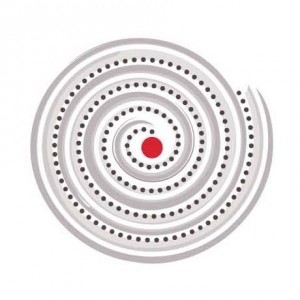Jodie Gale and The Psychosynthesis Centre Logos
Designed by Bianca Thompson Design.

The Spiral
The spiral is a highly complex and powerful symbol. It is ancient and used in almost every culture, from British, European and Scandinavian to Egyptian, Indian and Indigenous traditions. It is the great creative force, representing growth and expansion. It denotes fertility and the dynamic aspect of all things. It is associated with the web of life. It symbolizes the realms of existence, the various modalities of being and the wanderings of the Soul in manifestation. In Maori tradition it represents the masculine principle and is phallic, though it is usually symbolic of the feminine. The spiral is connected with the navel centre as the centre and power of life. It represents the path from external materialism and egoism to internal awareness and authenticity. Ultimately, the spiral represents the awareness of the self and the expansion of awareness outwards. It is a highly recognised symbol of the spiritual journey.
Reference: Cooper, J.C, An Illustrated Encyclopaedia of Traditional Symbols, Page 156.
Aboriginal Art Design
The spiral design emerged out of the ‘meeting place’ symbol used by Aboriginal Australians for thousands of years. Aboriginal symbols have multiple meanings and tell complex stories. Just as our symptoms do.
This ‘meeting place’ symbol spoke to me because in counselling and psychotherapy, we will meet each other in relationship. It is this relationship which is essential for healing old wounds. As you journey through therapy, you will meet and (re) connect with your authentic self, the deeper essence of who you really are!
Aboriginal spirituality originates from the Dreaming. The Dreaming refers to the creation of humans, language, culture, the land, the sea and the cosmos. Over time – the Ancestors grew tired – their bodies died but their spiritual essence remained in the landscape, the heavens and the waters. The Ancestors life giving and life powers still exist to this day at important sites around Australia.
Reference: AIATSIS: The Little Red Yellow Black Book, Page 10.









